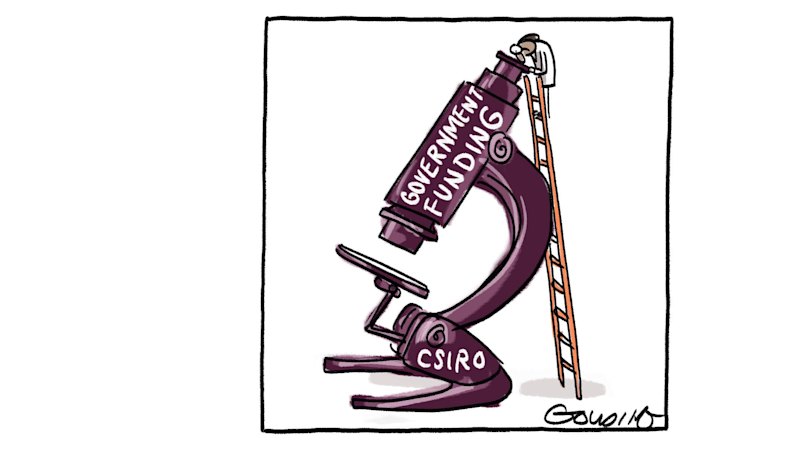
The announcement of 300-350 research job cuts at the Commonwealth Scientific and Industrial Research Organisation (CSIRO) has sent shockwaves through Australia’s scientific community. This development follows the loss of 800 support jobs last year, marking a troubling continuation of instability that has plagued the nation’s premier research institution for decades.
CSIRO Chief Executive Doug Hilton has described the situation as “fundamentally unsustainable,” citing funding growth of just 1.3 percent annually, while inflation has averaged 2.7 percent. This financial mismatch has left the organization in a perpetual cycle of restructuring, where each “solution” only seems to lay the groundwork for future problems.
Decades of Instability
The CSIRO’s current predicament is the latest chapter in a long history of organizational upheaval. Former CEO Malcolm McIntosh’s push for commercialization led to a crisis of competitive neutrality, while Geoff Garrett’s flagship programs resulted in a divisional hollowing-out that Megan Clark attempted to address through consolidation. Clark’s cuts, however, contributed to capability gaps that Larry Marshall sought to fill with a dramatic reshaping of the organization. Now, Hilton’s proposed cuts aim to reduce the CSIRO to its pre-COVID size while simultaneously finding $80-135 million annually for infrastructure upgrades.
Senior scientists have reported being financially stable just two years ago, buoyed by COVID-related funding that brought in young researchers with promises of long-term opportunities. However, as funding dried up, these researchers were let go, leaving remaining staff uncertain about their job security as they head into the holiday season. The focus on climate change, clean energy, and artificial intelligence, while important, is being pursued amidst yet another disruptive reorganization.
Expert Opinions and Public Concerns
Professor David Fox, a former senior research scientist and project leader at CSIRO, has voiced his concerns, stating that the organization is being forced to perform “corporate theatre” at the expense of vital scientific work. He argues that the public deserves a CSIRO that can focus on science rather than survival, and calls for a break in this destructive cycle to allow the institution to fulfill its critical mission.
Dr. David G. Hay, a retired CSIRO scientist, echoes these sentiments, lamenting the government’s inability to recognize the value of adequately funding a world-class scientific agency. He highlights the potential loss of research in manufacturing and data science, areas where Australia has historically excelled.
“For every dollar spent on CSIRO research, $3.50 are earned, often leading to groundbreaking discoveries like Wi-Fi.”
Historical Parallels and Future Implications
The CSIRO’s current funding challenges are not new. Over the decades, successive Australian governments have reduced spending on the organization from 0.16 percent of GDP in 1978-79 to just 0.03 percent today. Meanwhile, countries like China have increased their investment in science to unprecedented levels, potentially leaving Australia at a disadvantage in the global race for technological innovation.
Greg Tanner, another retired CSIRO scientist, warns that cutting the organization’s capacity is akin to “cutting ourselves off at the brain.” He emphasizes the long-term investment value of scientific research, noting that advances often result from years of patient work by dedicated teams.
“Our current prosperity owes much to past discoveries by CSIRO, including Wi-Fi, polymer banknotes, and the Hendra vaccine.”
Conclusion: A Call for Stability
The CSIRO’s situation serves as a stark reminder of the need for stable and sustained investment in scientific research. As Australia faces challenges like climate change, energy transition, and technological advancement, the role of the CSIRO is more critical than ever. The government must recognize the importance of providing the organization with the resources it needs to thrive, ensuring that Australia’s scientific community can continue to contribute to global innovation and prosperity.
Without a change in approach, the CSIRO risks losing its ability to attract and retain top talent, potentially missing out on future breakthroughs that could shape the world. It is imperative that policymakers listen to the voices of scientists and experts, prioritizing the long-term health of the nation’s leading research institution.






